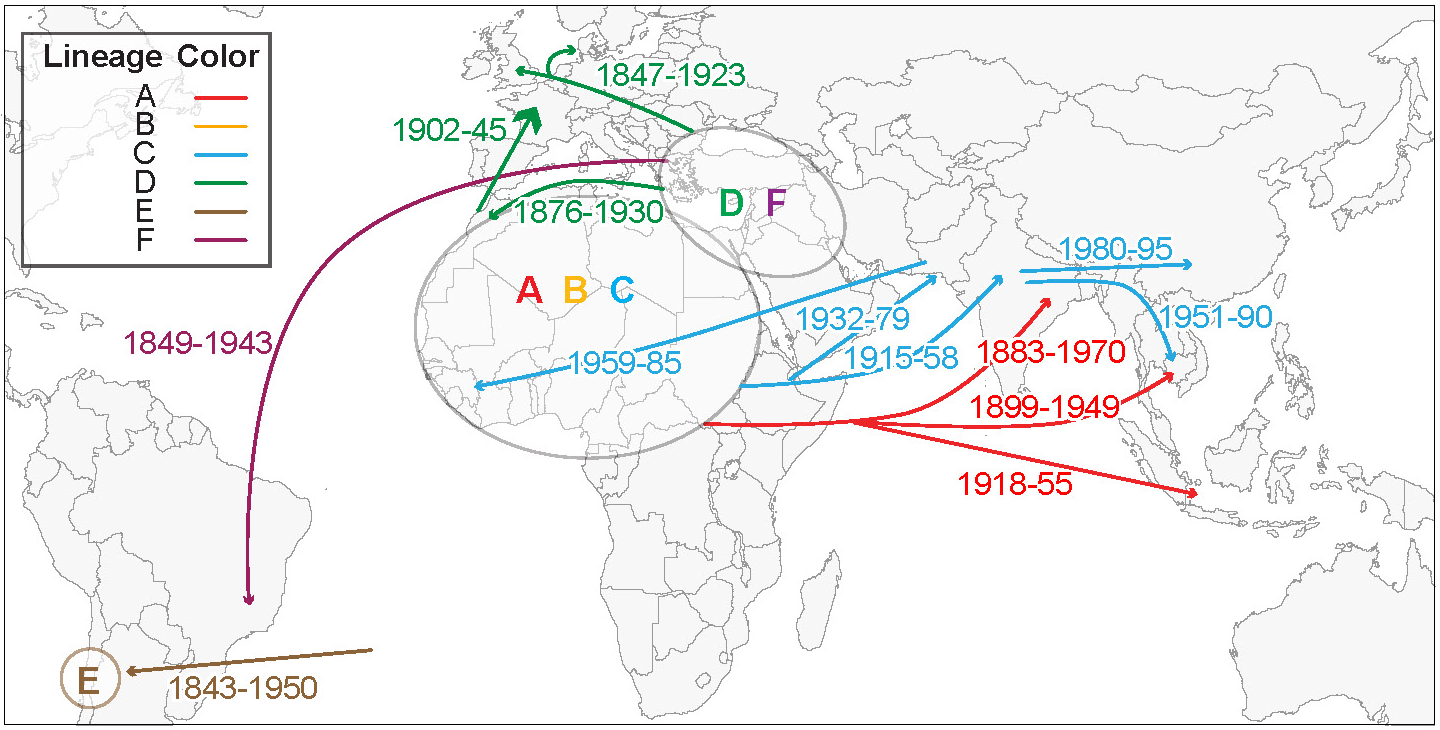Why do resistant bacteria succeed?

In two new studies, scientists use genome sequencing of worldwide samples to show that bacteria can take very different routes to becoming a successful disease. Researchers can use these large-scale approaches to track pathogen transmission patterns across the globe and therefore possibly to predict the emergence and spread of a new disease.
In one study of Streptococcus agalactiae, a cause of serious neonatal septicaemia and shock in new born babies, the team reported that the emergence of the disease was due in part to the acquisition of genes encoding resistance to the antibiotic tetracycline. Contrastingly, a separate study of the bacteria Salmonella enterica serovar Paratyphi A found that it was most likely environmental changes that were possibly associated with urbanisation that led to epidemics of typhoid fever in human populations over the 450-year history of the disease.
“We have developed systems for characterising the population structure of pathogens, and used these systems in two instances to yield different findings. We were able to define the timeframe of the origin of two completely different infectious diseases, and in future we will be able to use this approach to identify and control emerging threats.”
Professor Gordon Dougan Author from the Wellcome Trust Sanger Institute
The first study revealed that S. agalactiae, or Group B Streptococcus (GBS), emerged as a disease in the 1960s not just because of previous under diagnosis, as originally thought, but as a result of the widespread use of tetracycline, which was introduced in 1948. The overuse of this broad-spectrum antibiotic resulted in an evolutionary bottleneck, where the GBS populations gained tetracycline resistance genes, converting them from a harmless organism to a pathogen and enabling them to occupy a new niche in mothers and babies.
Tetracycline can also reduce the thousands of species of helpful microorganism living in the mother and child, collectively known as the microbiome, which might help control GBS disease. This research provides further insight into how a new infectious disease emerges, and it can be used to determine how a future threat could be prevented.
“This is possibly the earliest case of the emergence of a new disease that can be directly associated with antibiotic use. GBS causes a distressing infection of sepsis and meningitis seen in new born children that can result in severe illness and death, making it one of the most serious diseases in babies.”
Professor Gordon Dougan
This study also highlights the need for targeted drugs to fight strains such as CC17 A particularly virulent strain of GBS responsible for the majority of meningitis cases in new born children. The data reveals that CC17 capitalised on becoming resistant to tetracycline and then other antibiotics, expanding rapidly in numbers and contributing to the increase of neonatal infections.
“The use of broad-spectrum antibiotics has led to the emergence of GBS disease. By combining surveillance with the use of specific targeted antimicrobials, we can reduce the risk of a new disease emerging in the future whilst maintaining the normal protective microbial flora within us.”
Dr Mark Davies, co-first author and NHMRC Training Fellow at both the Sanger Institute and the University of Queensland, Australia
Using whole genome sequencing in a separate study of S. enterica serovar Paratyphi A, which causes typhoid fever, researchers discovered the disease emerged in humans about 450 years ago, and has remained genetically similar since then. Researchers revealed that Paratyphi A has undergone a gradual accumulation of mutations over time known as genetic drift, which has resulted in little change during its life as a pathogen. However, signatures of antibiotic resistance are now also emerging but they appear not to be stable at the moment.
This study is particularly timely because vaccines for Paratyphi A are currently being tested, and it is hoped that trials will start within two to three years. The research will help scientists to understand how the pathogen is moving between individuals and between populations, as well as how it is changing genetically over time. This will enable scientist to risk assess each vaccine trial site individually, and apply a tailored intervention programme that will be likely to have the most impact in that particular location.
The study also suggests that the disease may have moved from an animal source when humans started living in denser urban environments in close proximity to livestock. Similar to the history of whooping cough and tuberculosis, the pathogen then became fixed in humans and spread around the globe. Like the GBS study, this new research also suggests that Paratyphi A has begun to change genetically in recent decades through the use of antibiotics.
More information
Funding
Please see the paper for full funding details.
Participating Centres
Please see the paper for a full list of participating centres.
Selected websites
Publications:
Selected websites
The Wellcome Trust Sanger Institute
The Wellcome Trust Sanger Institute is one of the world’s leading genome centres. Through its ability to conduct research at scale, it is able to engage in bold and long-term exploratory projects that are designed to influence and empower medical science globally. Institute research findings, generated through its own research programmes and through its leading role in international consortia, are being used to develop new diagnostics and treatments for human disease.
The Wellcome Trust
The Wellcome Trust is a global charitable foundation dedicated to achieving extraordinary improvements in human and animal health. We support the brightest minds in biomedical research and the medical humanities. Our breadth of support includes public engagement, education and the application of research to improve health. We are independent of both political and commercial interests.


